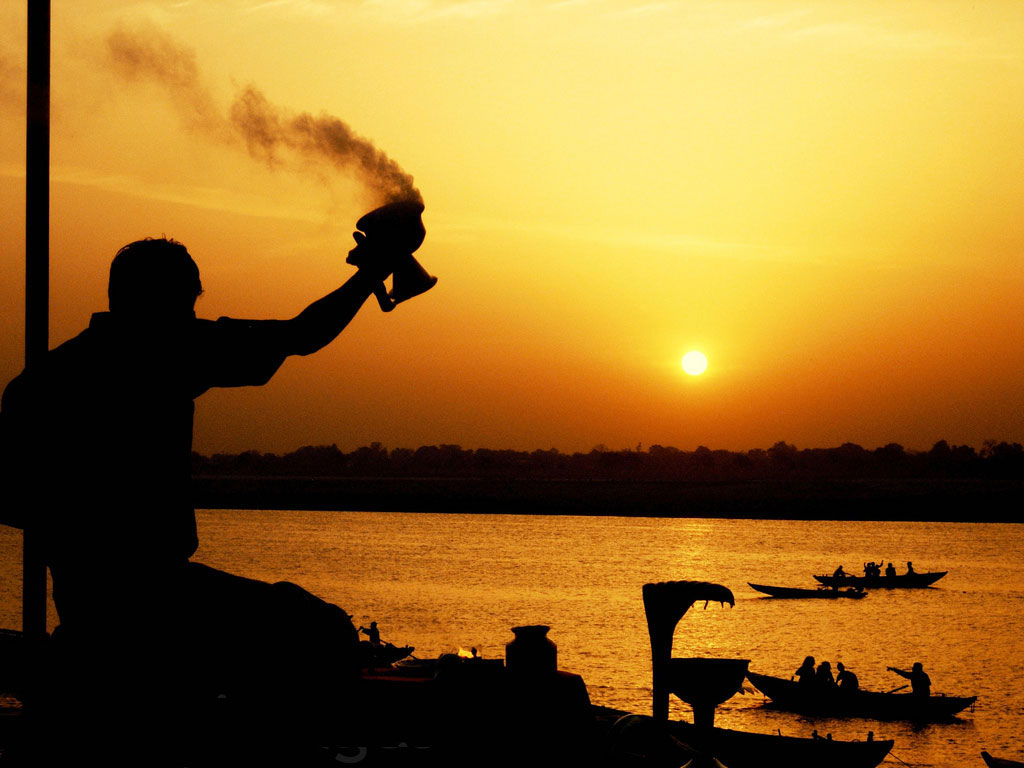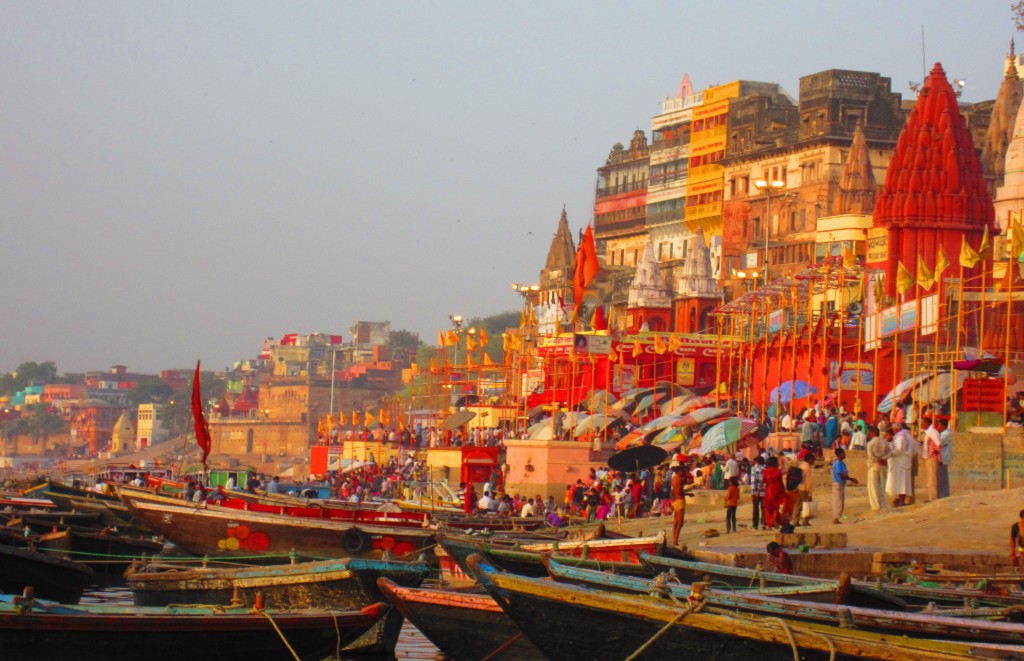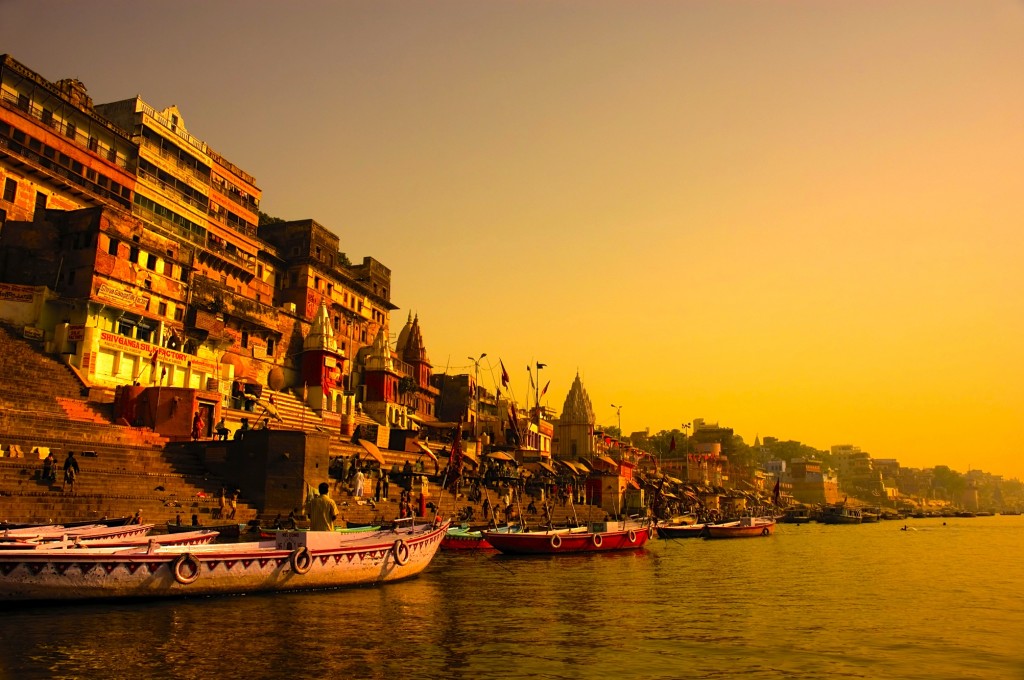Varanasi: As the dawn breaks over the Ganges, rises the vague shadows of the boatmen, passing through the river. The entire city of Varanasi gradually starts emerging in to the gleaming sunlight. And there awakens the town with life, as people flock to the holy river in hundreds. The smoke rises from the dusky river with a tinge of scent of rosewater and sandalwood, refreshing the souls. This is just another typical dramatic morning in Varanasi, the sacred of all the Hindu cities.
The Ganges has always been a holy river for the Hindus, including any town or city on the banks of this river. According to the Hindu mythology, the Hindu God, Shiva, came to live with his companion Parvati. The city of Varanasi is also known as ‘Kashi’, the ‘City of Light’, a recognition of the first avatar of Shiva as a pillar of light.
Every Hindu wants to visit Varanasi once in his/her lifetime to take a dip in the holy water of the Ganges. According to the legend, to live here is to be with the gods and to die here is to obtain moksha, or salvation. Being a city of millennium in this world, Varanasi has a legendary history behind it where Buddha gave his first semon near Sarnath. This city has been a centre of Hindu pilgrimage since decades, despite three centuries of Muslims reign.
This city is a beautiful place to visit with a hundred ghats spread along the 7km stretch of river. It houses more than a dozen of temples, terraces, pavilions and palaces. There is also a Dhobi Ghat, where one can see the people wash their clothes every morning, to believe it or not this is just an amazing colourful site. The regular site of the devotees bathing in the Ganges, men, women, children praying, some meditating along the banks of the river or doing yoga will continue to astonish you as usual. On the banks of the Ganges, while the mothers rinse the clothes, you will hear their children giggling, the sadhus ( holy men) in their bright range gear, sitting and smoking their chillum pipes, the pundits open up their huge umbrellas and start their day. While the rest of them are just catching up with some early morning news.
What could be a flabbergasting site for the foreign tourist, could be a usual one for the Indians- The death on display. The public cremations on the riverbank have always been a site of marvel for the visitors who are prohibited from any sort of photography for the same. The burning ghats i.e., the Harishchandra and Manikarnika Ghats are where most of the cremation takes place on a regular basis. As the funeral pyre flames up, it sets an emotional moment for the family members, who do nothing but pray for the soul to rest in peace. The Indians, with a belief in the cycle of life, death and reincarnation also believe that spending the final days of one’s life in Varanasi is to gain moksha (liberation of the soul) after death. The Mahashivratri is another essential festival followed after the Ganga Mahotsav festival.
As the dusk sets in, the city is illuminated with thousands of prayer candles along the banks of the holy river, where hundreds of priests perform the Ganga Arti, symbolizing the light offerings to the Ganges. This is a site that one should look forward to when on a visit here.
A marvellous place, with an extraordinary hustle and bustle of the city life, Varanasi is a cradle of life and death, seized in equal balance.
– Urvashi Shah







5 Comments